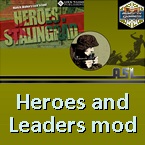asl3d
Posts: 6531
Joined: 2/6/2017
Status: offline

|
Marmon-Herrington Armoured Car
At the start of WW2, after being informed that Britain could not meet their AC requirements, the South Africans undertook the production of a domestically designed armored car. Its 4x2 Ford truck chassis was supplied by Canada, the armament by Britain, and the armor by South African industry. After the first 135 had been built, production switched to a 4x4 model using a conversion kit supplied by the U.S. Marmon-Herrington Co. The British contracted for a number of the 4x4 type, stipulating that each be equipped with an ATR, LMG, and an AA Vickers MG in lieu of the original armament of one Vickers. This version they named the Marmon-Herrington II, and the South Africans added the suffix ME ("Middle East") to distinguish it from the original-armament type which they designated MFF ("Mobile Field Force"). 338 ME and 549 MFF Mk II were built, with the former going to North Africa and the latter retained for use elsewhere. In May 1941 the Mk III entered production, featuring improvements derived from its predecessors' use in combat; 798 ME and 1,780 MFF Mk III were built, with about one-third of the latter going to India, Malaya and the Netherlands East Indies. While unsophisticated in design, lightly armored and poorly armed, Marmon-Herringtons (or South African Reconnaissance Cars, as the South Africans themselves designated them) were unfailingly reliable and proved a valuable asset to the Allies in 1941-42. Indeed, of the four British AC regiments that operated mainly in North Africa, only one (the 12th Lancers) was not completely equipped with the "Monkey-Harry" at some time during that period. In addition, South Africa's contribution to the desert war included two AC regiments and two divisional recce battalions, all of which employed Marmon-Herringtons throughout their tours of duty there. Besides North Africa, ME types also saw action in Syria, East Africa and Madagascar. The Union of South Africa ultimately produced 5,746 Marmon-Herringtons during WW2 (including the Mks IV-VII which saw no combat). Prior to mid 1943, an AC troop comprised three armored cars.

 Attachment (1) Attachment (1)
_____________________________
Semper fidelis
|
 Printable Version
Printable Version





































 New Messages
New Messages No New Messages
No New Messages Hot Topic w/ New Messages
Hot Topic w/ New Messages Hot Topic w/o New Messages
Hot Topic w/o New Messages Locked w/ New Messages
Locked w/ New Messages Locked w/o New Messages
Locked w/o New Messages Post New Thread
Post New Thread